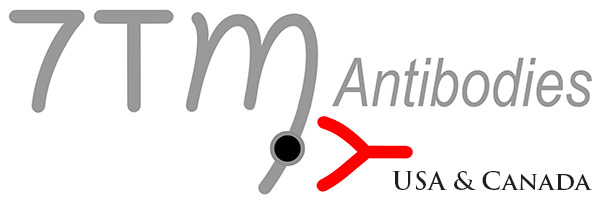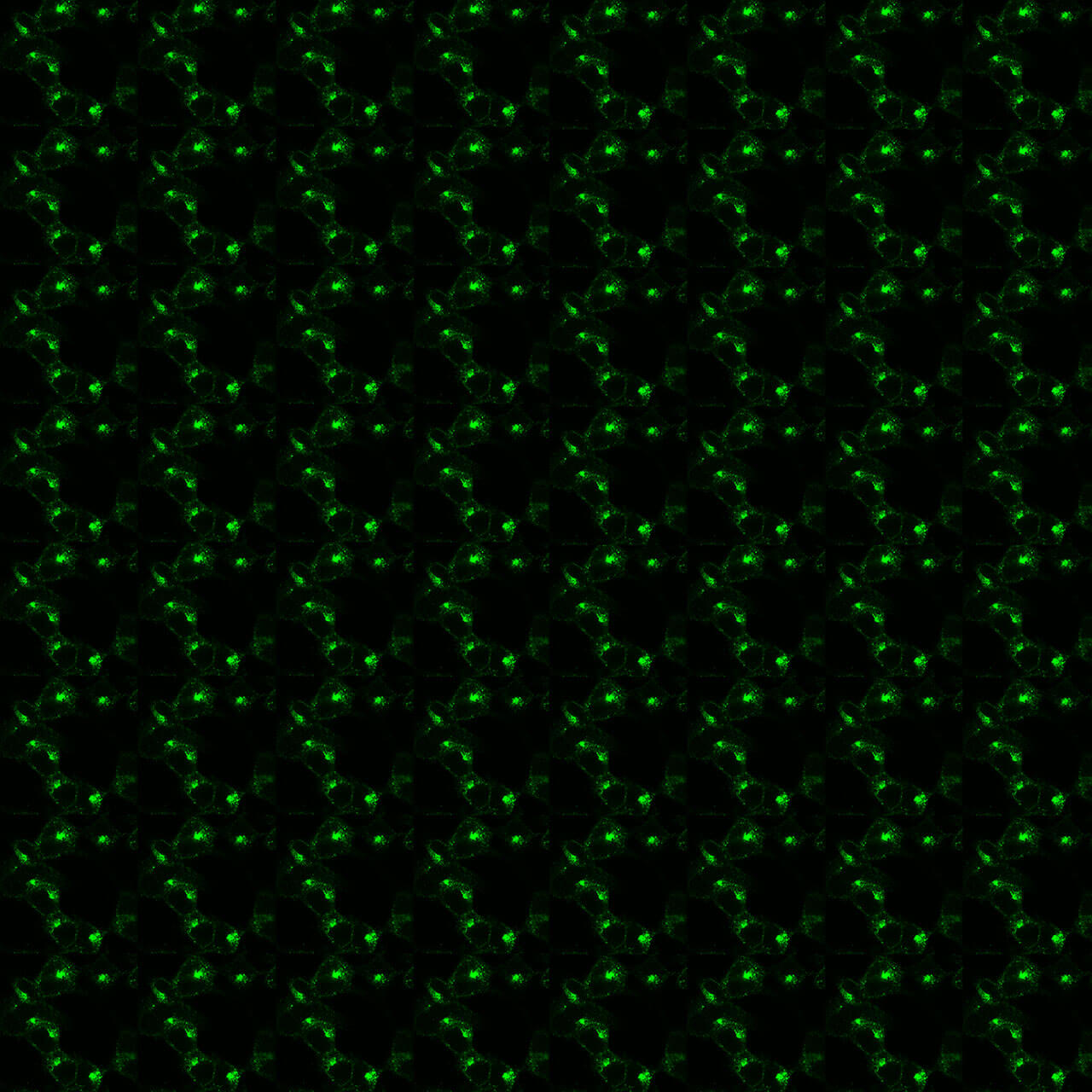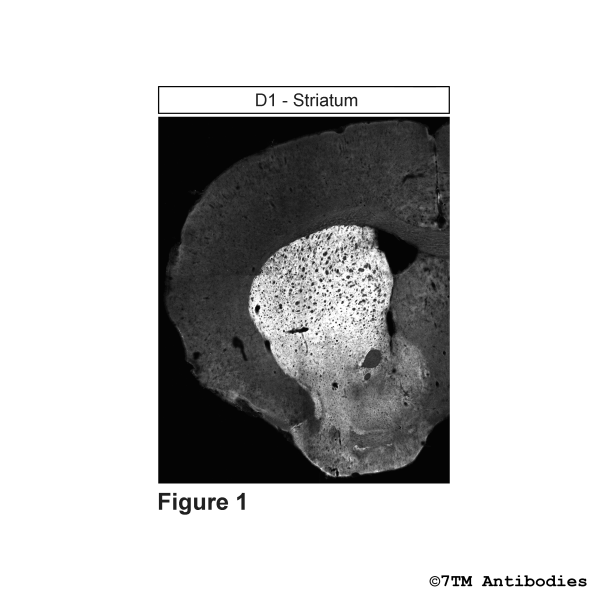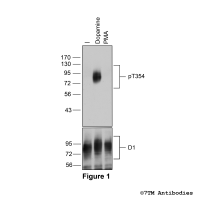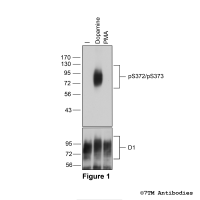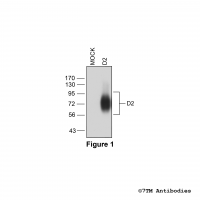Prices plus VAT plus shipping costs
Ready to ship today,
Delivery time appr. 5-8 days
- Order number: 7TM0214N-IC
- Content: 100 µl
- Host: Rabbit
The D1 receptor antibody is directed against the distal part of the carboxyl-terminal tail of human D1. It can be used to detect total D1 receptors in Western blots independent of phosphorylation. The D1 antibody can also be used to isolate and enrich D1 receptors from cell and tissue lysates. It also detects D1 in cultured cells and tissue sections by immunohistochemistry.
| Alternative Names | D1, DADR, Dopamine Receptor 1, Dopamine-1A Receptor 1 |
| IUPHAR Target ID | 214 |
| UniProt ID | P21728 |
| Western Blot (WB) | 1:1000 |
| Immunohistochemistry (IHC) | 1:100 |
| Species Reactivity | Human |
| Host / Isotype | Rabbit / IgG |
| Class | Polyclonal |
| Immunogen | A synthetic peptide presents the carboxyl-terminal tail of human D1. |
| Form | Liquid |
| Purification | Antigen affinity chromatography |
| Storage buffer | Dulbecco's PBS, pH 7.4, with 150 mM NaCl, 0.02% sodium azide |
| Storage conditions | short-term 4°C, long-term -20°C |
Figure 1. Immunohistochemical identification of Dopamine Receptor 1 in striatum. Sections were dewaxed, microwaved in citric acid, and incubated with anti-D1 (Dopamine Receptor 1) antibody (7TM0214N-IC) at a dilution of 1:100. Sections were then sequentially treated with biotinylated anti-rabbit IgG and avidin-biotin solution.Color was developed by incubation in 3-amino-9-ethylcarbazole (AEC), and sections were counterstained with hematoxylin.
Figure 2. Immunohistochemical identification of Dopamine Receptor 1 and Dopamine Receptor 2 in striatum. Sections were dewaxed, microwaved in citric acid, and incubated with anti-D1 (Dopamine Receptor 1) antibody (7TM0214N-IC) at a dilution of 1:100 (left panel) or incubated with anti-D2 (Dopamine Receptor 2) antibody (7TM0215N-IC) at a dilution of 1:100 (right panel). Sections were then sequentially treated with biotinylated anti-rabbit IgG and avidin-biotin solution.Color was developed by incubation in 3-amino-9-ethylcarbazole (AEC), and sections were counterstained with hematoxylin.
Figure 3. Immunocytochemical identification of Dopamine Receptor 1 in transfected HEK293 cells. HEK293 cells stably expressing the Dopamine Receptor 1 (D1) were either not exposed or exposed to 100 nM Dopamine for 30 min and immunocytochemically stained with anti-D1 antibody (7TM0214N-IC) at a dilution of 1:200. Note, D1 receptors were confined to the plasma membrane in untreated cells (MOCK). D1 receptors were seen in perinuclear clusters of vesicles after 30 min Dopamine exposure.
Figure 4. Validation of the Dopamine Receptor 1 in transfected HEK293 cells. Native HEK293 cells (MOCK) or HEK293 cells stably expressing the Dopamine Receptor 1 (D1) were lysed and immunoblotted with the phosphorylation-independent anti-D1 antibody (7TM0214N-IC) at a dilution of 1:1000.
